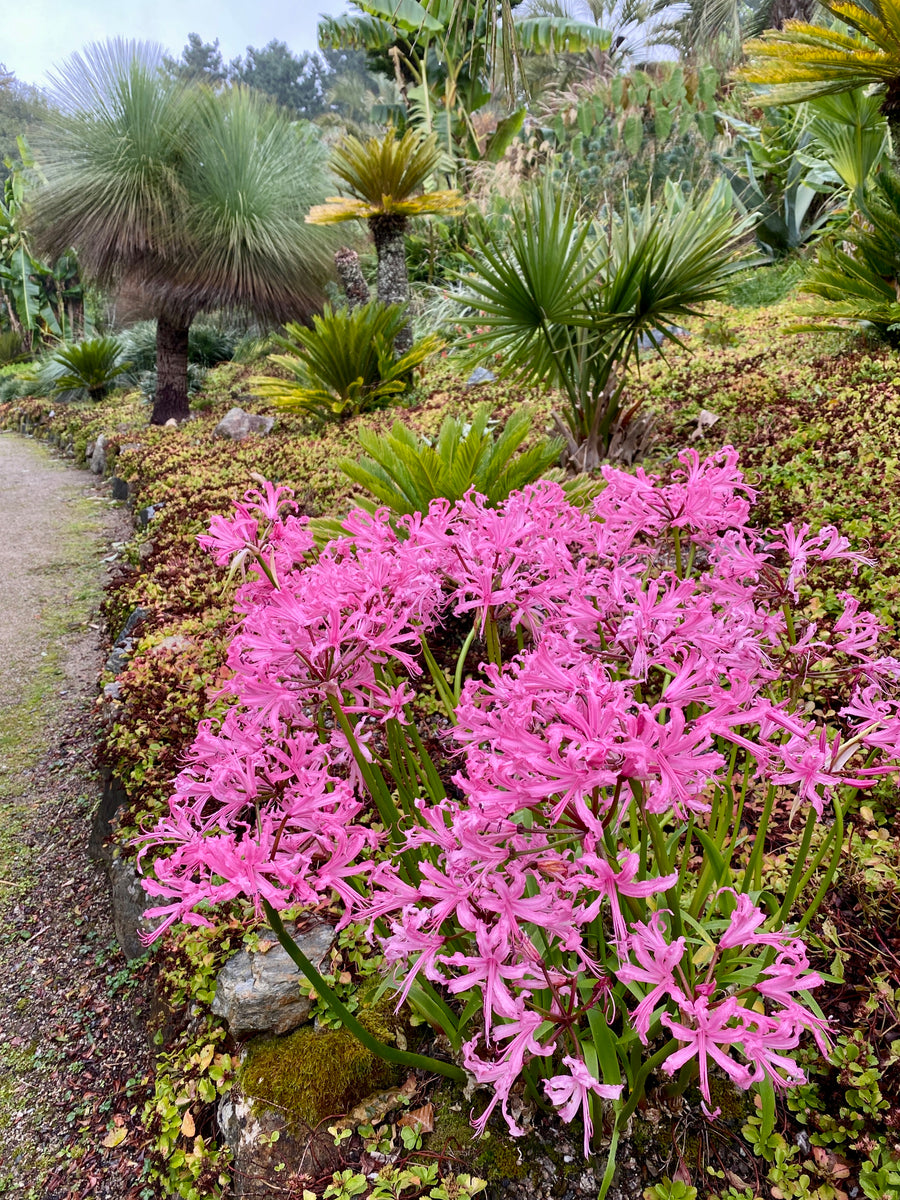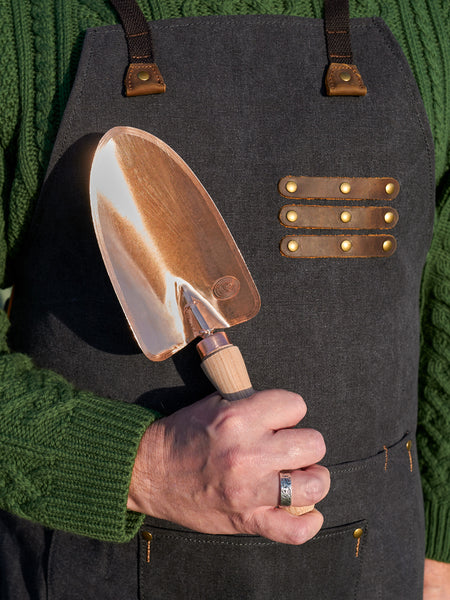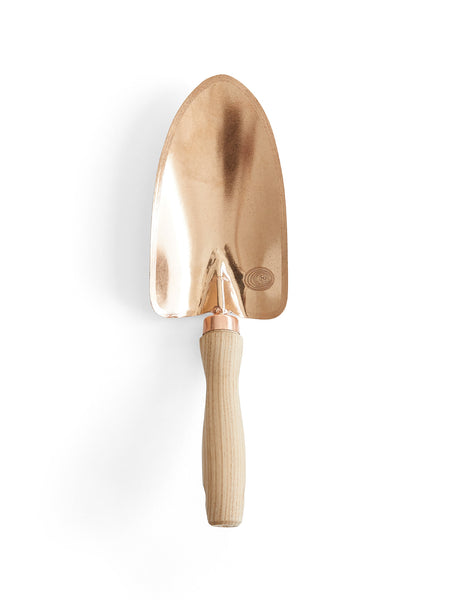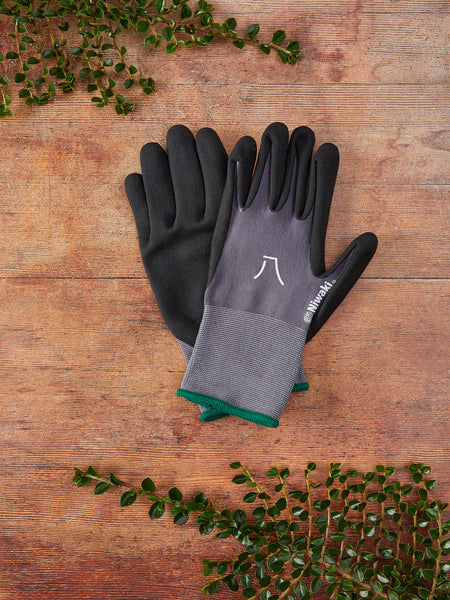In this new series of posts, I showcase plants that are especially close to my heart. I explain why I love them, how to grow them and share some of the pitfalls.
Nerines
During late autumn, one flower shines brighter than all the others; one might even say it sparkles; that flower belongs to the nerine, commonly known as the Guernsey lily.
The nerine most often grown in British gardens is Nerine bowdenii, named after the Cornishman Athelstan Bowden, who first sent plants from the Eastern Cape of Africa to his mother in Newton Abbot, Devon. Candy pink Nerine bowdenii is the hardiest of the nerines in our climate. Still, with a little protection, several other species can be grown successfully, including the true Guernsey lily, Nerine sarniensis, pictured below.

Nerine sarniensis is prized for its spectacular scarlet flowers
Most nerines are pink, but there are species and varieties with white, pale pink, magenta and red flowers. A favourite of mine is Nerine ‘Mr John’, which produces glittering, cherry pink blooms on long stems. Nerine bulbs produce leaves after flowering, and these die away in summer.
What’s to like?
Nerines aren’t short of attractive features, but what sets them apart is their flowering period, typically between late September and mid-November, when other plants look tired. Their flowers, produced on naked stems about 50cm tall, are unashamedly exotic. The cells on the surface of each petal are arranged in a way that makes the flowers sparkle as if sprinkled with fairy dust. On a cold, dreary November day, there’s nothing more uplifting than stumbling across a clump of nerines in full bloom.
Once established, nerines need little or no attention. Like agapanthus, they thrive on being crammed into tight spots and left alone. Mature clumps of nerines often erupt from the ground, the bulbs seemingly out of contact with the soil. They don’t seem to mind their elevated position in the slightest.
Homegrown nerines are a real treat if you’re a flower arranger, lasting several days after picking. Cut them just before the first buds open, and use flower food to help them stay hydrated.

Nerine bowdenii 'Isabel' has large, luscious, lipstick-pink blooms
How to grow them
Nerines originate from South Africa, clinging to cliffs and rocky slopes at high altitudes. Here, their bulbs are baked by the sun, and any rainfall seeps quickly away. Understanding this is the key to growing nerines successfully - they need a hot, bright spot and no lingering moisture. Hence, you’ll often find nerines growing in the rain shadow at the foot of a south-facing wall or between paving stones. Here they thrive on neglect - all you need to do is keep them clear of weeds and overhanging plants that might shade the sun-worshipping bulbs.

Sheltered and warmed by a low wall, these nerines are in their element.
Plant nerine bulbs in late summer with their necks sticking out of the ground, spacing them about 20cm apart. Don’t be tempted to plant other things between them as they need every drop of sunshine. You can plant bulbs more closely in pots - a bulb width apart is fine. Use John Innes No.2 compost with added grit and top the pots with more grit; this will deter slugs and snails and prevent moss from growing.
Avoid overwatering at any time of year but apply a high potash fertiliser such as tomato food occasionally through spring and until the leaves die down in late summer. Feeding will promote bigger, better, more abundant flowers. Deadheading after flowering will encourage nerines to invest their energy in making a big bulb that will flower well the following season.

Nerine filamentosa is more delicate than most nerines, with thread-like leaves and crinkled petals.
What can go wrong?
Nerines won’t succeed in shade or heavy, wet soil - indeed, they’ll curl up their toes and die very quickly. At best, you’ll get leaves and no flowers. If you can’t give them what they need, save your hard-earned cash for other plants.
Newly purchased nerine bulbs often take a couple of years to build up the energy to flower. Resist the urge to dig them up and move them unless you must. Leave clumps alone for at least five years, longer if possible, and divide in August if necessary.
Snails and slugs, enlivened by autumn rain and mist, and having decimated your hostas, take a shine to emerging nerines. Surround clumps with wool pellets to deter them and wrap copper tape around pots.
Nerines are not 100% hardy in colder regions. Fleece them after flowering if you can but try not to smother them or block out all the light as they’ll hate it. You can overwinter potted bulbs in a cold greenhouse or conservatory.

Although relatively common, Nerine bowdenii is hardier, more vigorous and cheaper to buy than most other nerines.





